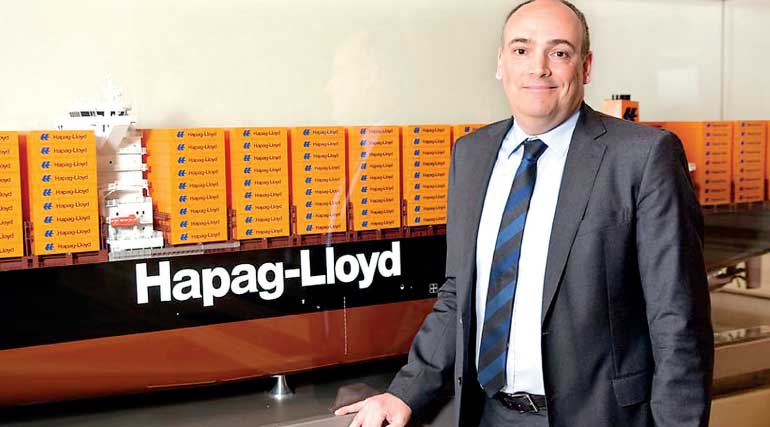Wednesday Mar 12, 2025
Wednesday Mar 12, 2025
Monday, 22 January 2018 01:01 - - {{hitsCtrl.values.hits}}

The CEO of Hapag-Lloyd, the world’s fifth-largest container shipping company, expects consolidation in the sector to continue this year, further reducing the number of largest shipping firms as they merge their businesses.
Talking to the reporters in Hamburg, Rolf Habben Jansen said that the consolidation drive will result in nine of the former 20 largest shipping companies from five years ago to disappear by the end of 2018, Reuters reports.
Hapag-Lloyd, fresh from completing the integration of its business with UAE-based liner shipping company United Arab Shipping Company (UASC), expects to reap a major portion of the gains from the deal this year.
According to Jansen, the company could achieve 85 to 90% of targeted annual synergies of USD 435 million this year and 100% from 2019.
Furthermore, the company expects its full-year earnings for 2017 to be higher than previously announced.
2018 seems to be on the right track, with charter rates on the rise and lower size of the idle fleet. However, further pressure is expected from containership deliveries set to join the global fleet this year.
The total boxship capacity set for delivery in 2018 is expected to reach 1.5 million TEU in 2018, according to the figures from Alphaliner. More than half of these deliveries will be made up of ULCVs ranging from 14,000 to 21,000 TEU.
Hence, Hapag-Lloyd’s CEO anticipates transport demand growth to reach 4.5% in 2018 and more than 4% in 2019.
Since integration with UASC provided Hapag-Lloyd with modern tonnage influx, the company has no need of ordering newbuilds and can dedicate its focus on bolstering its financial structure and cutting debt.
In October 2017, the German liner company raised $ 414 million in gross proceeds from its capital increase scheme, which was agreed upon as part of the merger with UASC.
Hapag-Lloyd said it would use the proceeds primarily to pay back its debts as well as for general corporate purposes.
Discover Kapruka, the leading online shopping platform in Sri Lanka, where you can conveniently send Gifts and Flowers to your loved ones for any event including Valentine ’s Day. Explore a wide range of popular Shopping Categories on Kapruka, including Toys, Groceries, Electronics, Birthday Cakes, Fruits, Chocolates, Flower Bouquets, Clothing, Watches, Lingerie, Gift Sets and Jewellery. Also if you’re interested in selling with Kapruka, Partner Central by Kapruka is the best solution to start with. Moreover, through Kapruka Global Shop, you can also enjoy the convenience of purchasing products from renowned platforms like Amazon and eBay and have them delivered to Sri Lanka.
Discover Kapruka, the leading online shopping platform in Sri Lanka, where you can conveniently send Gifts and Flowers to your loved ones for any event including Valentine ’s Day. Explore a wide range of popular Shopping Categories on Kapruka, including Toys, Groceries, Electronics, Birthday Cakes, Fruits, Chocolates, Flower Bouquets, Clothing, Watches, Lingerie, Gift Sets and Jewellery. Also if you’re interested in selling with Kapruka, Partner Central by Kapruka is the best solution to start with. Moreover, through Kapruka Global Shop, you can also enjoy the convenience of purchasing products from renowned platforms like Amazon and eBay and have them delivered to Sri Lanka.